.png)
The Carbon Footprint of Contracting: Can CLM Enable Sustainable Legal Operations?
Compared to the past, in today's business landscape, companies are faced with increasing pressure to perform effectively while minimizing their carbon footprint. One aspect of the problem which is hardly ever considered is contract management. Each contract that is written, reviewed, archived, and signed imposes not only administrative cost but also environmental cost-paper usage, electricity usage, and wasteful procedures all contribute to an organization's carbon footprint.
Law firms are now investigating how technology, specifically Contract Lifecycle Management (CLM) software, can decrease this footprint while increasing efficiency. In this article, we look at how CLM can drive legal operations transformation, drive sustainability, and create business value-all simultaneously.
Understanding the Carbon Footprint of Contracting
Contracts are at the heart of business operations, but their administration can be downright energy-hungry. Think of the traditional method:.webp?width=300&height=300&name=Untitled%20design%20(18).webp)
- Printing multiple copies of contracts for internal and external approvals.
- Keeping physical documents in warehouses or cabinets.
- Electronically or physically chasing stakeholders for approvals.
- Repeating manual processes for contract renewals or amendments.
Each of these activities consumes energy, paper, and human capital, which increases the overall environmental impact of contracting. Aside from the physical expenses, inefficient contract management also creates longer approval cycles, lost employee time, and redundant processes-unrelatedly contributing to higher energy usage and operational waste.
The inefficiencies affect business scalability. When businesses grow, manual processes create barriers to decision-making and slow the process down, introducing operational risk. Legal departments struggle to manage the amount of contracts, causing delays, deadlines missed, and additional labor costs. With the carbon footprint in such processes, businesses can begin to identify opportunities for automation, digitization, and workflow optimization.
Why Sustainability Matters in Legal Operations
Sustainability is not an option anymore; it is a business imperative. Stakeholders, regulators, and investors increasingly demand companies to integrate environmental, social, and governance (ESG) principles into all dimensions of operations-including legal processes. By adopting sustainable contract management practices, organizations can:
- Reduce paper and energy consumption through digitization.
- Satisfy new ESG regulations.
- Build stakeholder trust through open practices.
- Simplify workflows, saving money and time.
In short, sustainable contract management combines environmental stewardship and business effectiveness.
How CLM Drives Sustainability in Legal Operations
Contract Lifecycle Management software is not a digital file repository. New-generation CLM platforms apply automation, artificial intelligence, and analytics to automate each phase of the contract lifecycle-from creation.webp?width=300&height=300&name=Untitled%20design%20(23).webp) to signing to renewal. Here's how CLM drives sustainable legal operations:
to signing to renewal. Here's how CLM drives sustainable legal operations:
Reducing Paper and Printing Waste
By automating contract creation and storage, CLM renders several paper copies obsolete. Features such as electronic signatures and routing automation eliminate printing and courier costs and accelerate contract turnaround time.
- Automated reminders reduce delay and unnecessary printing.
- Electronic repositories minimize physical storage requirements.
- Version control eliminates error and unwanted duplication of documents.
Automating Repetitive Tasks
Legal staff spend hours doing work like reviewing clauses, metadata extraction, or pursuing approvals. CLM technology streamlines such work so lawyers can focus on more precious work. Benefits include:
- Metadata extraction to quickly tag and locate contracts.
- Workflow automation approval and notifications.
- Contract analytics to identify bottlenecks and optimize efficiency.
Automation not just saves time but also less energy from manual processes and redundant communications.
Enhancing Supplier and Vendor Accountability
CLM enables businesses to make green clauses and sustainability commitments a part of supplier contracts. This ensures that suppliers employ eco-friendly practices, for instance, by reducing greenhouse gas emissions or using renewable energy. Strategies are:
- Including measurable environmental targets in agreements.
- Baring compliance through self-service monitoring and reporting.
- EntryPoint suppliers into circular economy models, e.g., reusing products or recycling waste.
Driving Operational Efficiency
Green contract management is as much an internal efficiency function as it is one of green responsibility. CLM provides transparency into workloads, approvals, and deadlines, allowing Legal Operations to:
- Prevent bottlenecks and delays.
- Optimize human assets.
- Reduce wasteful energy usage.
For example, a Legal Ops department utilizing CLM can process large volumes of contracts without expanding headcount, keeping overheads low while delivering high environmental performance.
Practical Strategies for Sustainable Contract Management
While CLM provides the technology backbone, organizations need strategies for attaining sustainability in contracting. The following are practical steps Legal Operations teams need to take:.webp?width=300&height=300&name=Untitled%20design%20(37).webp)
- Supplier Cooperation and Evaluation
Supply chain management starts with sustainable practices. Legal departments can:
- Engage with sustainably aligned suppliers.
- Conduct environmental, social, and ethical practice reviews.
- Impose sustainability conditions in contracts to hold them accountable.
- Incorporation of Green Clauses
Contracts also can be employed positively to encourage or require sustainable practices. Some examples are:
- Carbon emissions reduction from manufacturing.
- Packaging and waste reduction.
- Using renewable energy.
These provisions make contracts more concrete and something that can lead to sustainability.
- Performance Metrics and Reporting
Monitoring progress is vital to sustaining compliance and improvement. Legal Operations needs to:
- Set measurable sustainability objectives (e.g., emissions reduction, energy efficiency).
- Report and track performance using CLM dashboards.
- Take advantage of data-driven insights to enhance operations and transparency with stakeholders.
- Lifecycle Assessments
Environmental impact knowledge of products and services throughout their lifecycle helps define contract terms. Legal teams can:
- Evaluate manufacturers' and disposal practices among suppliers.
- Negotiate contracts with a focus on sustainable solutions.
- Reduce environmental impact along the supply chain.
- Renewable Energy Agreements
Terms can pledge commitment to clean energy. Legal teams can:
- Take up Power Purchase Agreements (PPAs).
- Temp suppliers and partners to switch to renewable energy.
- Track energy consumption and reduce total carbon footprint.
- Ethical Labor and Circular Economy Principles
Sustainability isn't just about the earth-but it's also social responsibility:
- Include fair labor practice provisions.
- Advocate circular economy practices such as recycling or material reuse.
- Foster transparency and stakeholder engagement in sustainability goals.
- Technology Enablement
New CLM technology is necessary to track, automate, and report on sustainability initiatives:
- Automated monitoring ensures green clauses compliance.
- Analytics provide actionable insight into supplier and internal performance.
- Collaboration tools improve visibility across stakeholders.
- Efficiency capabilities save human labor and reduce energy usage.
With these strategies, coupled with the right CLM software, organizations are able to make sustainability the backbone of their legal functions.
The Business Case: Why Sustainability and Efficiency Go Hand in Hand
Sustainable business through CLM is good for business, and good for the environment. Some benefits are:.webp?width=300&height=300&name=Untitled%20design%20(19).webp)
- Cost reduction: Reduced paper, less delays, reduced external counsel costs.
- Faster revenue recognition: Automated workflows accelerate contract renewals and approvals.
- Regulatory compliance and risk management: CLM aids compliance with regulations and ESG practices.
- Enhanced reputation: Front-runner attention to sustainability wins investors', employees', and customers' trust.
CLM Enables Legal Operations Excellence
Legal Operations teams have to accomplish more with fewer resources. CLM allows them to:
- Streamline internal operations and cut out inefficiencies.
- Enhance financial management, providing insights into spend, cost per contract, and billable hours.
- Guarantee information governance through role-based access, audit trails, and knowledge transfer capabilities.
By adding sustainability to these processes, Legal Ops is able to fulfill environmental responsibility and operational excellence.
Looking Ahead: The Future of Sustainable Contracting
The law is transforming, and sustainability is set to become an integral expectation. Companies that embed CLM within their sustainable legal functions will have a competitive advantage. Emerging future trends are:
- AI-powered contract intelligence: Set contracts up for automatic analysis for sustainability compliance and performance gaps.
- Enterprise-wide integration: Integrate CLM with ERP, CRM, and procurement systems with ease to ensure end-to-end sustainability control.
- Data-driven decision making: Apply analytics to continuously optimize processes and enhance sustainability performance.
- Regulatory readiness: Anticipate changing ESG and environmental requirements.
By embracing these technologies, companies can lower their carbon footprint, increase efficiency, and be seen as good corporate citizens.
Conclusion
In the world of business today, legal departments are under great pressure to accomplish more with fewer resources. Contract lifecycle management (CLM) software offers a centralized framework, automation capabilities, and analysis that not only automate contract processes but also greatly minimize the carbon cost of using conventional contract management. Through the adoption of digital processes, automated monitoring, and AI-based insights, companies can eliminate unnecessary manual steps, enhance the utilization of assets, and increase overall efficiency.
Sustainable contract management is not an operational enhancement-it is a strategic differentiator. Organizations that incorporate ESG principles in contracting can improve compliance, build stakeholder trust, and show corporate responsibility. CLM allows legal teams to work on high-value activities alongside driving higher-order sustainability objectives, making legal operations efficient as well as green.
Investing in CLM software now is a move towards a greener, smarter, and more agile future for your company. The intersection of operational efficiency and sustainability enables businesses to satisfy regulatory demands, answer stakeholder demands, and gain long-term competitive positioning.
Continue your journey towards revolutionizing your legal operations with Dock 365's CLM solution and begin establishing a sustainable, efficient, and future-proof legal team.
Reimagine your legal operations- Schedule a free demo with Dock 365 today and discover how CLM can facilitate both efficiency and sustainability.
Book a Live demo
Schedule a live demo of Dock 365's Contract Management Software instantly.
.jpg?width=1260&height=1205&name=Image%20(2).jpg)
Written by Fathima Henna M P
As a creative content writer, Fathima Henna crafts content that speaks, connects, and converts. She is a storyteller for brands, turning ideas into words that spark connection and inspire action. With a strong educational foundation in English Language and Literature and years of experience riding the wave of evolving marketing trends, she is interested in creating content for SaaS and IT platforms.


